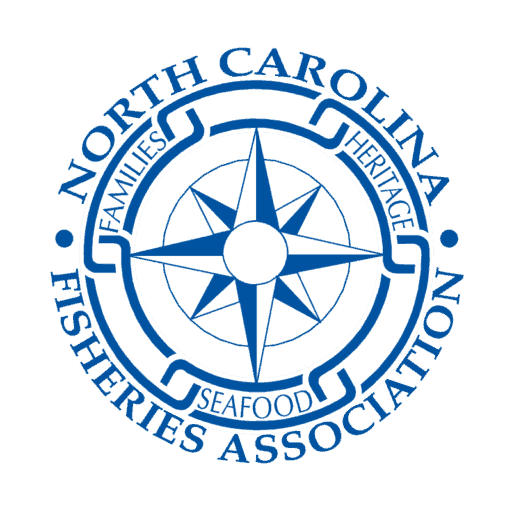LEGISLATIVE UPDATE:
VOTE!
This coming Tuesday, November 3rd, is ELECTION DAY! I you have not already voted, you have the duty and responsibility to VOTE!!!
DMF ACCEPTING APPLICATIONS FOR CARES ACT FISHERIES RELIEF PROGRAM
MOREHEAD CITY – The N.C. Division of Marine Fisheries is accepting applications for the Coronavirus Aid, Relief, and Economic Security (CARES) Act Fisheries Relief Program. The financial assistance is available to eligible commercial fishermen, for-hire fishing operators, seafood dealers and processors, and marine aquaculture operations with revenue losses in the spring of 2020 greater than 35% as compared to the prior 5-year average revenue.
The division has mailed application packets to eligible license, lease, and permit holders. Application packets are available on the CARES Act Fisheries Assistance Information webpage
(http://portal.ncdenr.org/web/mf/cares-act) or at division offices for eligible stakeholders who are not licensed by the division.
North Carolina received $5.4 million from the CARES Act to provide financial relief through direct payments to fishery-related stakeholder groups affected by the COVID-19 pandemic. Applicants will be required to complete the application, an affidavit, and provide supporting materials that document loss of revenue greater than 35% from March 1 to May 31, 2020 as compared to the average revenue from the same period of the previous five-years (March 1 to May 31, 2015-2019).
One of the objectives of the Program is to make participants whole; that is, to put them in the same position financially as they would have been had COVID-19 not occurred. NOAA Fisheries requires that any relief monies received from the Program cannot result in a participant’s annual (January to December) 2020 earnings exceeding their five-year average annual (January to December) revenue between the years 2015-2019. This means that the combination of fisheries assistance with any other CARES Act relief (such as the Paycheck Protection Program, Small Business Association loan, or unemployment payments) plus their fisheries income and/or other income in 2020 will not exceed their average annual revenue from the previous five years, or a minimum of one year for those in business less than five years.
Applications and supporting documentation must be delivered in person to the division Headquarters Office at 3441 Arendell St., Morehead City or mailed to the N.C. Division of Marine Fisheries, CARES Act Fisheries Relief Program, P.O. Box 769, Morehead City N.C. 28557.
Applications and all documents must be received in the Morehead City headquarters office or postmarked by 5 p.m. Nov. 30, 2020. Applications and supporting documentation will not be accepted at other division offices. Applications and supporting documentation that are submitted after 5pm on November 30, 2020 will not be considered.
For questions regarding the spending plan, email covid19relief@ncdenr.gov or call the division’s License and Statistics Office at 252-808-8105.
South Atlantic State/Federal Fisheries Management Board Annual Meeting Summary
The Board met to consider approval of Atlantic Cobia Draft Addendum I (Press Release)
(http://www.asmfc.org/uploads/file/5f91c228pr24CobiaAddendumI_Approval.pdf); to review the spot and Atlantic croaker traffic light analyses (TLA) and resulting management triggers; and to review and approve annual FMP Reviews, state compliance reports, and de minimis requests for red drum, Atlantic croaker, and Atlantic cobia. If you have any specific questions, please do not hesitate to reach out.
Spot and Atlantic Croaker Traffic Light Analyses
The Chairs of the Spot and Atlantic Croaker Technical Committees (TC) presented the results of the annual TLAs for spot and Atlantic croaker. The TLA assigns a color (red, yellow, or green) to categorize relative levels of indicators on the condition of the fish population (abundance metric) or fishery (harvest metric). For example, as harvest or abundance increased relative to is long term mean, the proportion green in a given year will increase. The Board annually evaluates amounts of red against threshold levels to potentially trigger management action. In 2019, the TLA triggered for both spot and Atlantic croaker at the 30% level, or a moderate level of concern. Staff presented the resulting management responses outlined in Addenda III for Spot and Atlantic croaker. For both species, non de minimis states are required to institute a 50 fish bag limit for their recreational fishery, and non de minimis states must reduce commercial harvest by 1% of the average state commercial harvest from the previous 10 years. States with more restrictive measures in place are encouraged to keep them. The Board discussed the implementation timeline for states to make the required management changes. State implementation plans are due to the TC by February 12, 2021, with the Board meeting to occur by webinar the week of March 15, 2021, to approve the plans.
Annual Fishery Management Plan Reviews
I presented annual FMP Reviews for red drum, Atlantic croaker, and Atlantic cobia. The Board considered de minimis requests from states for the three species, and approved all annual FMP reviews, state compliance reports, and de minimis requests. De minimis requests were approved for the red drum fisheries in New Jersey and Delaware. For Atlantic croaker, de minimis requests were approved for the recreational and commercial fisheries of New Jersey, and the commercial fisheries for Delaware, South Carolina, Georgia, and Florida. For Atlantic cobia, de minimis requests were approved New Jersey, Delaware, PRFC, Maryland, and the commercial fishery for Georgia.
ISFMP Policy Board
Based on the growing number of species under the purview of the South Atlantic State/Federal Fisheries Management Board, the Policy Board agreed to divide its species among two newly created boards: a Coastal Pelagics Board, which will oversee the management of Atlantic cobia and Spanish mackerel, and a Sciaenids Board, which will oversee the management of spot, red drum, black drum, Atlantic croaker, and spotted sea trout. This division will allow each Board to provide the appropriate amount of time and attention to its respective species, without compromising its focus on other species due to time limitations. Additionally, given the expanding ranges of some species, the new Board configuration will allow more northern states to effectively engage on species management programs for which they have a declared interest. As part of the new board structure, the South Atlantic Fishery Management Council be invited to join both Boards to ensure continued collaboration between state and federal management. At this point, the advisory panel (AP) will remain as is to provide input to both boards until the Commission has completed its revision to the AP process. The Commission is considering ways to improve our AP process to better engage members and use members’ time more effectively.
Savannah Lewis | Fishery Management Plan Coordinator
Atlantic States Marine Fisheries Commission
1050 N. Highland Street, Suite 200 A-N
Arlington, VA 22201
Phone: 703.842.0740 | Fax: 703.842.0741
FOR IMMEDIATE RELEASE, OCTOBER 27, 2020
Presentations and audio files from the Atlantic States Marine Fisheries Commission’s 79th Annual Meeting Webinar are now available at http://www.asmfc.org/home/2020-annual-meeting-webinar; go to the relevant board/committee header and click on either Presentations or Audio.
Tina Berger
Director of Communications

